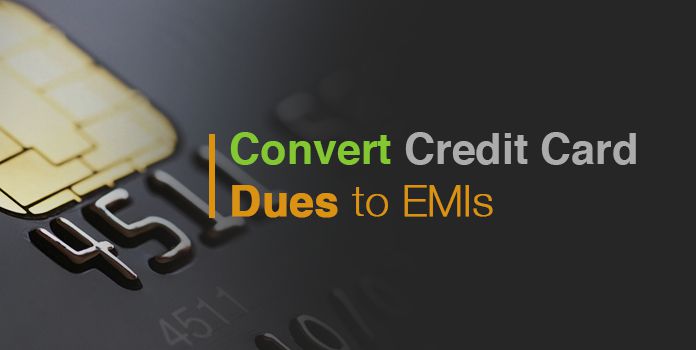Why Should You Convert Your Credit Card Outstanding into EMI?

Last Updated : Aug. 25, 2018, 5:09 p.m.
Rajat Malhotra is an engineer working in a Mumbai-based infrastructure company. He applied for a credit card some three years back and was greeted with an approval instantly. Rajat was all but delighted of the fact that he could shop without having to check the wallet for cash to fund the purchase.
Initially, his card shopping experience was superb, to say the least, fulfilling his wishes and needs. However, the impulsive buying tendencies did him in by soaring the card bills beyond his ability to pay in full. He followed the minimum due payment routine but of no avail as the tall annual interest rate of 35% on the revolving credit wreaked havoc in his financial life.
But there’s a way to counter the situation which is to convert the dues into EMIs, abbreviated for Equated Monthly Installments. The conversion comes at a much lower interest rate, helping card shoppers pay their dues with comfort.
So, if your situation is similar or same to that of Rajat, you can take the route of EMI to resolve the current mess. The article will deliberate on the benefits the EMI conversion has in store in for you.
Benefits of converting Credit Card Outstanding into EMI
There are several benefits associated with the conversion of credit card outstanding into EMI. Take a look at some.
Interest Rate Comes Down Sharply
Dispel a notion that there won’t be any interest charged on getting the outstanding converted into monthly installments. There would be interest but at a much lesser rate compared to when carrying the outstanding without EMI.
The interest rate on EMI conversion comes anywhere between 13%-20% per annum, much lower as compared to the interest rate of 30%-45% on revolving credit without EMI. What also adds appeal to the EMI conversion is the fact that most banks levy interest on reducing balance basis for such a transaction. It means the rate will apply on the reducing balance of the outstanding instead on the entire amount. This brings down the overall interest.
Example – You have paid an EMI worth ₹10,000 on a total outstanding of ₹50,000. The interest will be levied on the remaining balance of ₹40,000 and not ₹50,000.
Flexible Repayment Tenures
You are offered a flexible repayment tenure ranging from 3-24 months, with some banks like Kotak giving as much as 4 years. The tall outstanding balance can thus be repaid in small installments over such an extended repayment period, helping avoid a bad habit of getting sucked into a minimum due payment routine. Paying the minimum due, which is charged at about 5% of the outstanding balance, is a cardinal error you must not commit. The outstanding would keep getting taller with the levying of interest on the revolving credit.
Credit History Mends
The default, which can be real with a revolving credit card dues, can be eliminated from your payment cycle with them getting converted into installments. The EMI amount would be a lot easier to pay, potentially removing the scope for any late payment. With that not only you prevent any late payment charges but also mend your credit history marred by default due to tall card dues.
How Can You Convert Credit Card Dues Into EMIs?
You can get it converted via net banking, SMS or even by calling the customer care or visiting the nearest bank branch. On finding you being eligible for EMI conversion, the concerned lender will nod to your request and convert the outstanding into small installments.
What Needs to be Kept in Mind?
Even though the credit card EMI option works greatly in favour of the customers, there’s still a need to check the costs associated with the move. Banks deduct processing fee at about 1%-2% of the outstanding balance plus applicable GST. Like loans, even credit card EMIs can also be foreclosed before the tenure ends, with one lump sum payment. However, it could lead to charges at 2%-3% of the foreclosure amount.

